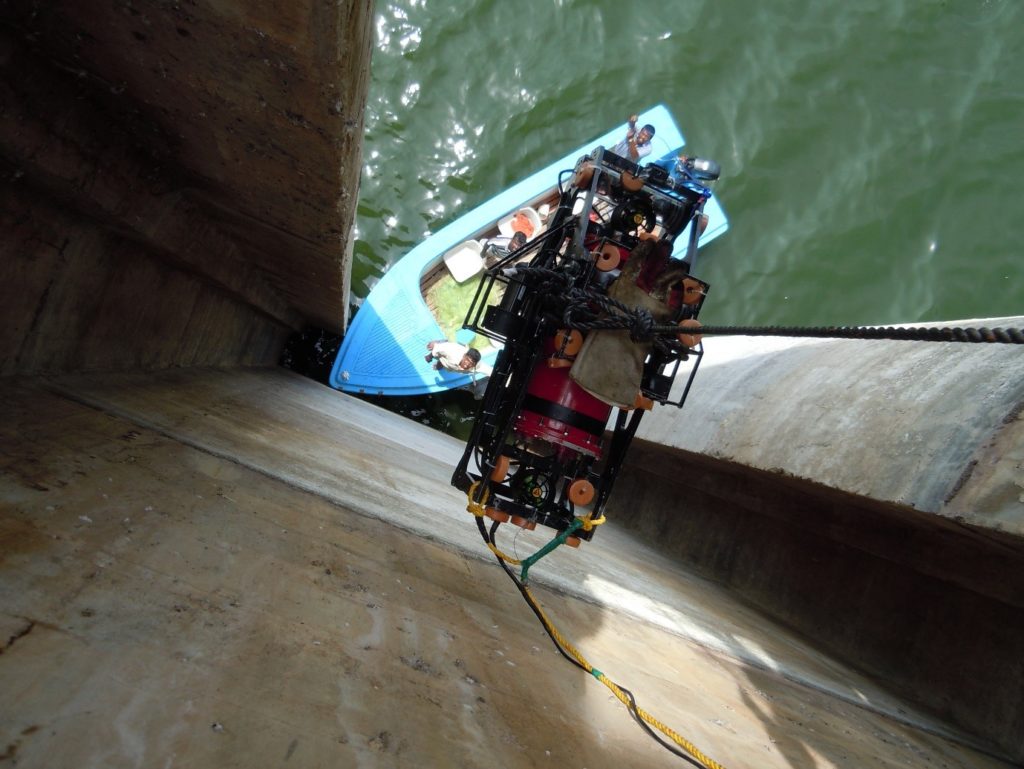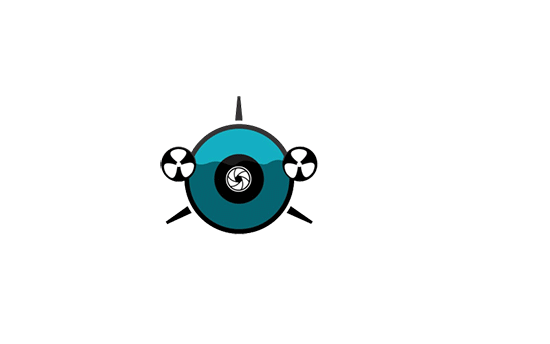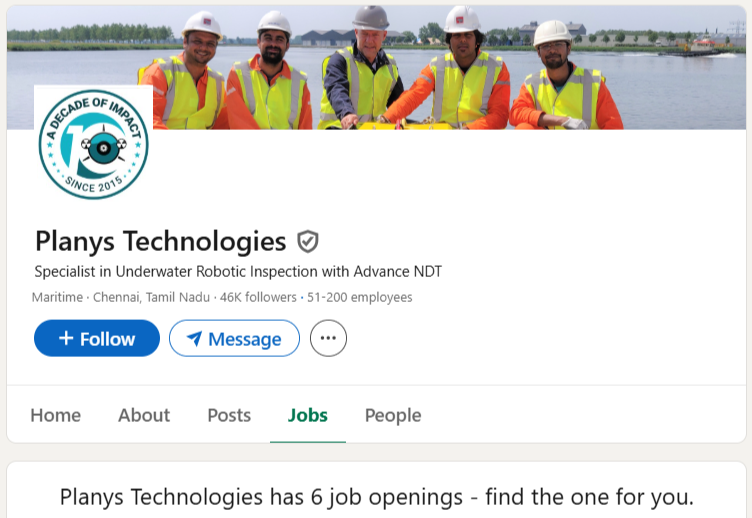
What an ROV does is eliminates the need for human presence in the water, which in most cases, makes inspections simpler and safer to conduct than a diving operation or even a manned submersible. These vehicles are ideal for scour inspection is a type of structural inspection, confined spaces, deep water inspections, or deployment in any condition unsafe for diver entry.
Judging by the pre/post dive safety precautions and the contingencies that are in place during diving operation, conducting diving inspections underwater is a demanding job that is even considered by some as the most dangerous job. And in this dangerous environment, a lot of multi-tasking is involved on the diver’s part in limited time and with limited endurance.
They must be trained camera operators and are responsible for planning, researching, preparing equipment, and capturing the shot – all whilst managing their oxygen mixture levels and manoeuvring in limited visibility. This is why many engineers reviewing the inspection video recordings complain of the recorded footage being out-of-focus and “shaky”.

(ROV Pilot and site engineer watching the live streaming of underwater inspection)
Although qualified and experienced, divers still lack the expertise of a fully qualified engineer who is able to identify areas of concern more accurately. And with no ability togeotag , it’s difficult to trace back the information that is gathered. Engineers reviewing the inspection reports are unable to refer to previous inspection reports to collaborate the information that has been collected.
The Physical Limitations Of A Diver
Diver inspections are affected by the limitations of the human body too. Divers are only able to remain underwater for 1-2 hours before having to resurface to replace the breathing tanks. Physical limitations of the human body restrict the divers to a maximum underwater depth of 50 meters before nitrogen narcosis becomes a significant concern.
If the diving inspection is deeper than 45m, the depth requires the divers to use trimix, a mixture of oxygen, helium and nitrogen to breathe and may require specialized suits to combat the ambient pressures and PSIs that act against the diver. The deeper a diver descends, the less time they are able to spend at operational level, and the longer the ascent due to the necessary safety stops to avoid decompression sickness.
Machines Can Go Where Man Cannot!
A ROV however, offers more operational capability as it can submerge to a depth of 200-300 meters and is capable of geotagging the locations visited, making it easier for the engineers to refer back to specific areas when needed. Since the ROV’s are highly manoeuvrable under the expert control of the pilots above surface on the ship, engineers can guide the pilot to specific areas of concern in real time. And because ROV’s can be powered over their tether cable, they can continue operating endlessly without any risk of running out of air or suffering from decompression sickness.
As underwater ROV technology continues to evolve and transform, industry professionals are faced with a simple question: Diver or ROV?
The entire purpose of man creating machines is to improve the way we do things. And with ROV’s, underwater inspections can be carried out more efficiently and in a safer environment, keeping the divers out of harm’s way, not matter how highly trained they are. Safety is of utmost importance, whether it be above water or below it. Not just the diving firms, but also the firms employing the diving team to carry out the inspection must ensure all members of the crew are safely working throughout the task.
Using ROV’s in the place of divers for underwater inspections is not a case of Man vs. Machine.
It’s more the case of Man AND Machine.

(Planys ROV Mike performing Dam Inspection)
Planys pioneers in manufacturing of commercial compact ROVs or underwater drones providing underwater robotic inspection and survey solutions catering to various sectors like Maritime (Ports and Shipping), Infrastructure (Dams and bridges) and Energy (Oil & Gas, Power, Desalination). Planys is first ROV company in India to provide underwater inspection services and has developed 6 ROVs since its establishment.


